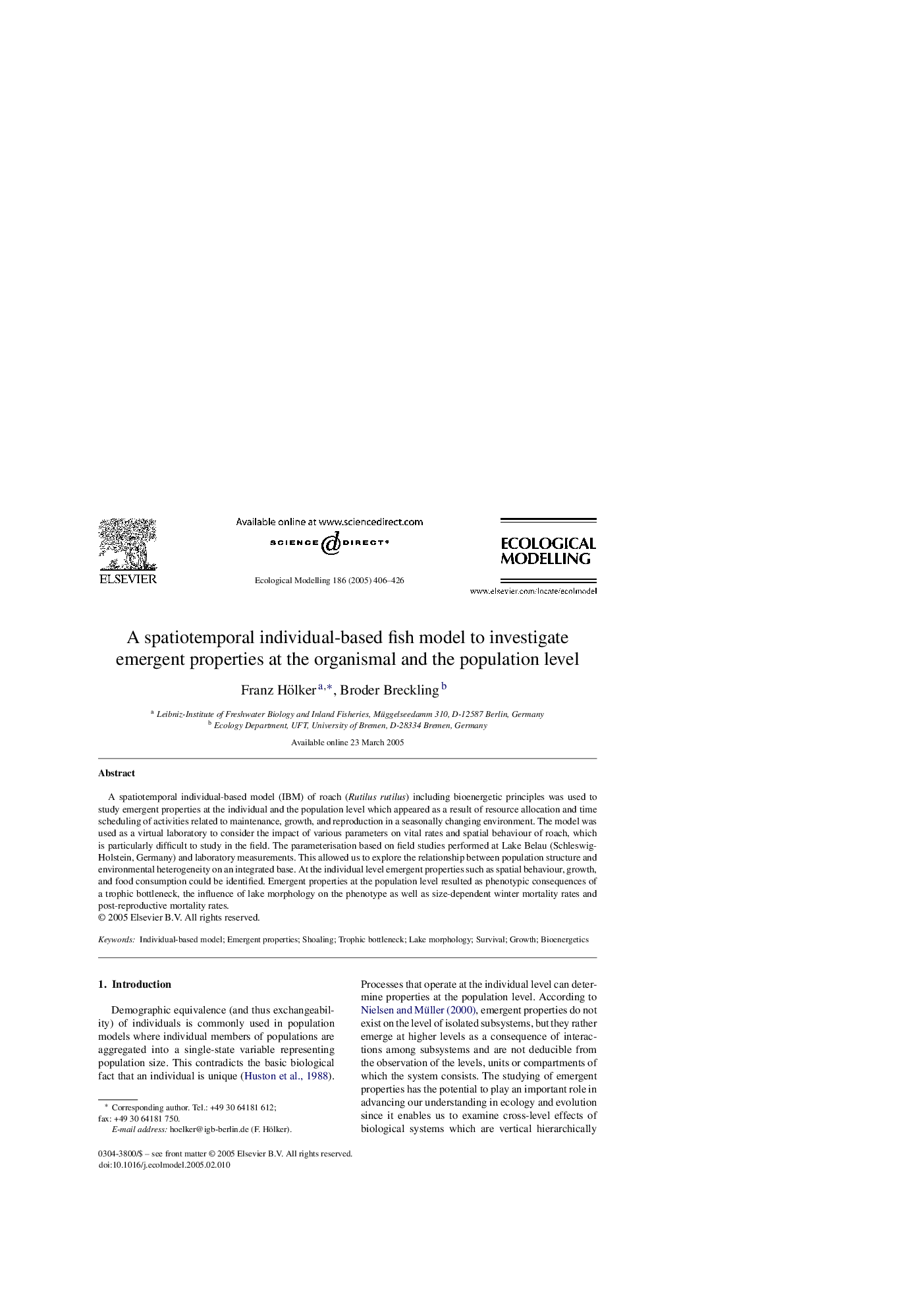| Article ID | Journal | Published Year | Pages | File Type |
|---|---|---|---|---|
| 9443431 | Ecological Modelling | 2005 | 21 Pages |
Abstract
A spatiotemporal individual-based model (IBM) of roach (Rutilus rutilus) including bioenergetic principles was used to study emergent properties at the individual and the population level which appeared as a result of resource allocation and time scheduling of activities related to maintenance, growth, and reproduction in a seasonally changing environment. The model was used as a virtual laboratory to consider the impact of various parameters on vital rates and spatial behaviour of roach, which is particularly difficult to study in the field. The parameterisation based on field studies performed at Lake Belau (Schleswig-Holstein, Germany) and laboratory measurements. This allowed us to explore the relationship between population structure and environmental heterogeneity on an integrated base. At the individual level emergent properties such as spatial behaviour, growth, and food consumption could be identified. Emergent properties at the population level resulted as phenotypic consequences of a trophic bottleneck, the influence of lake morphology on the phenotype as well as size-dependent winter mortality rates and post-reproductive mortality rates.
Keywords
Related Topics
Life Sciences
Agricultural and Biological Sciences
Ecology, Evolution, Behavior and Systematics
Authors
Franz Hölker, Broder Breckling,
